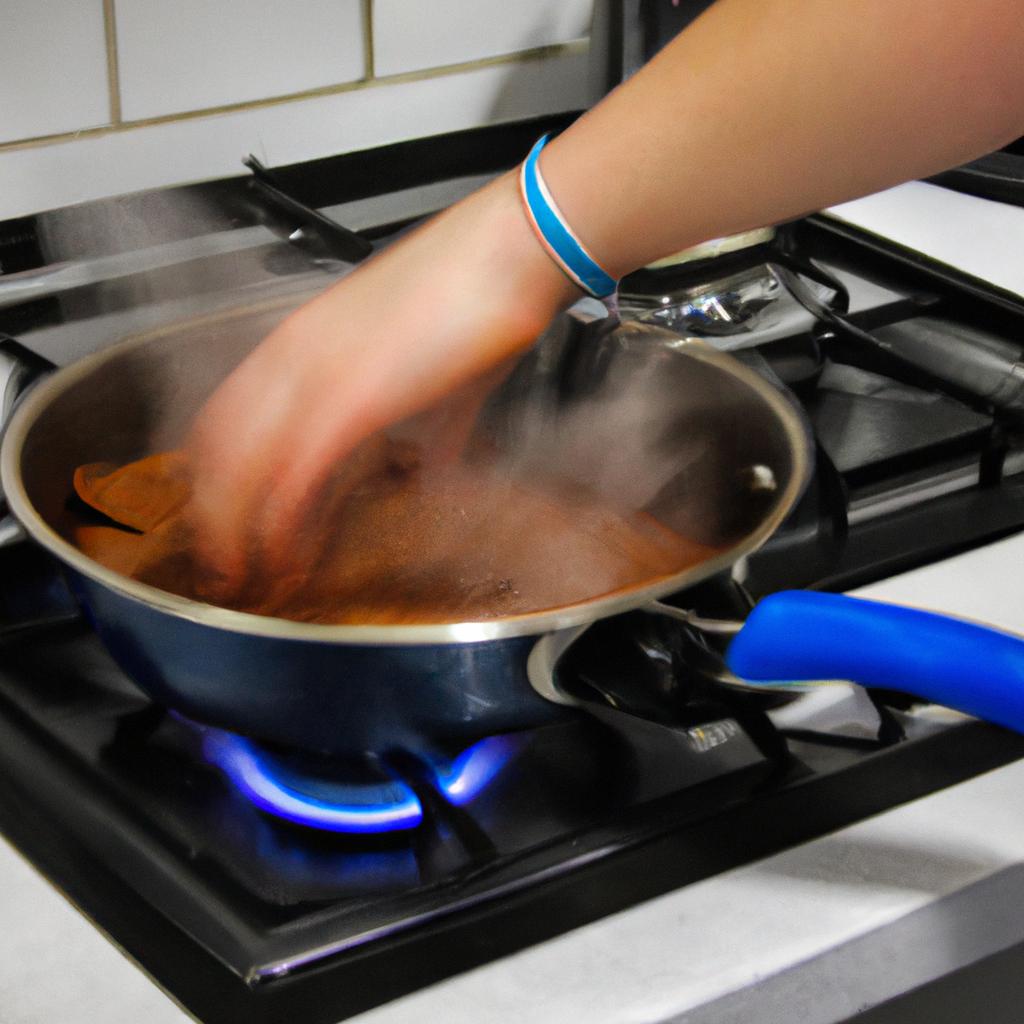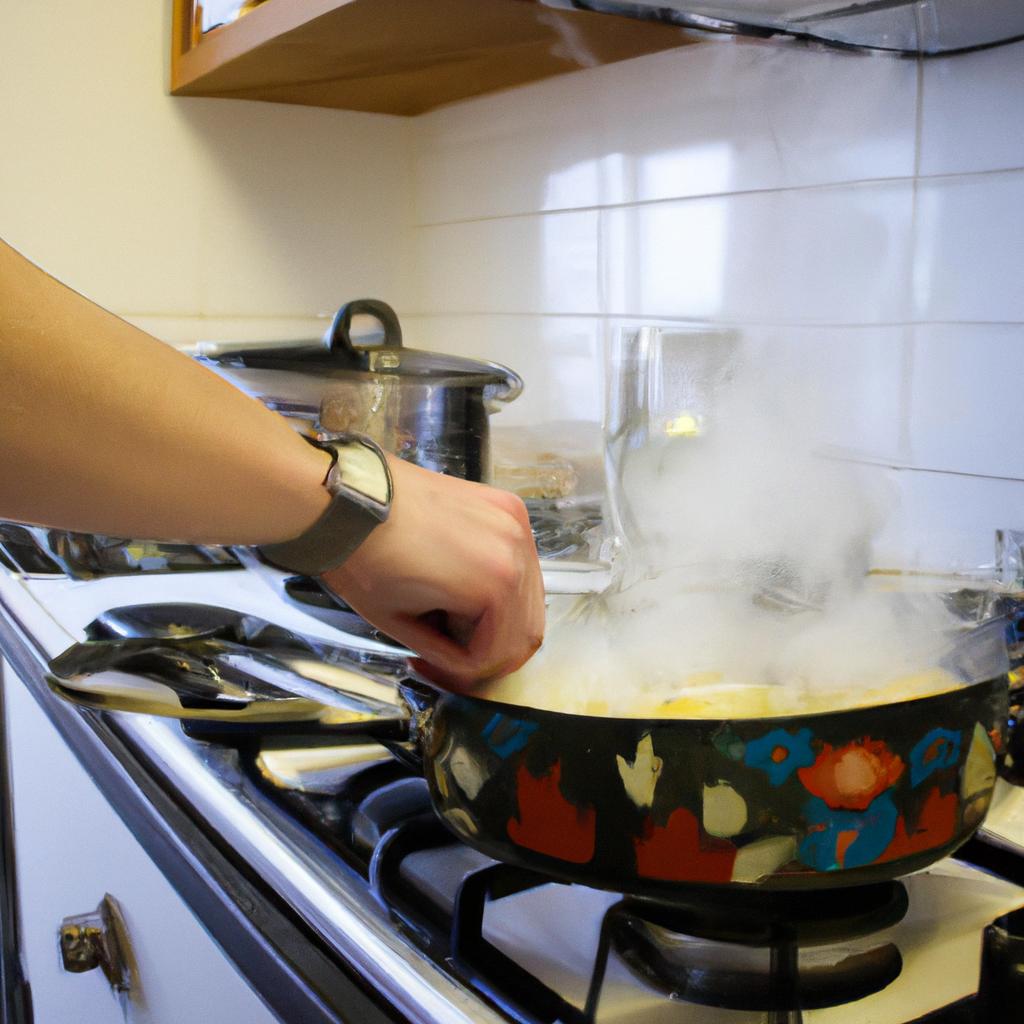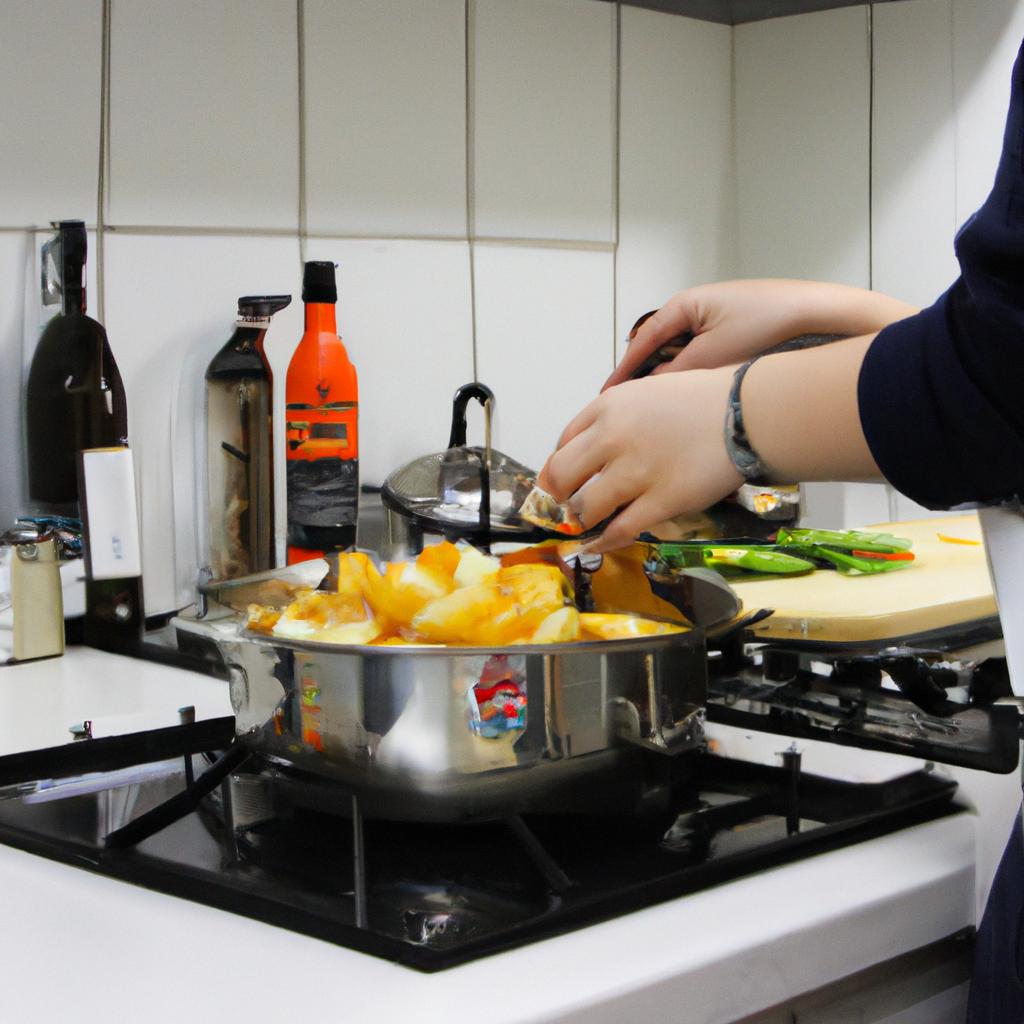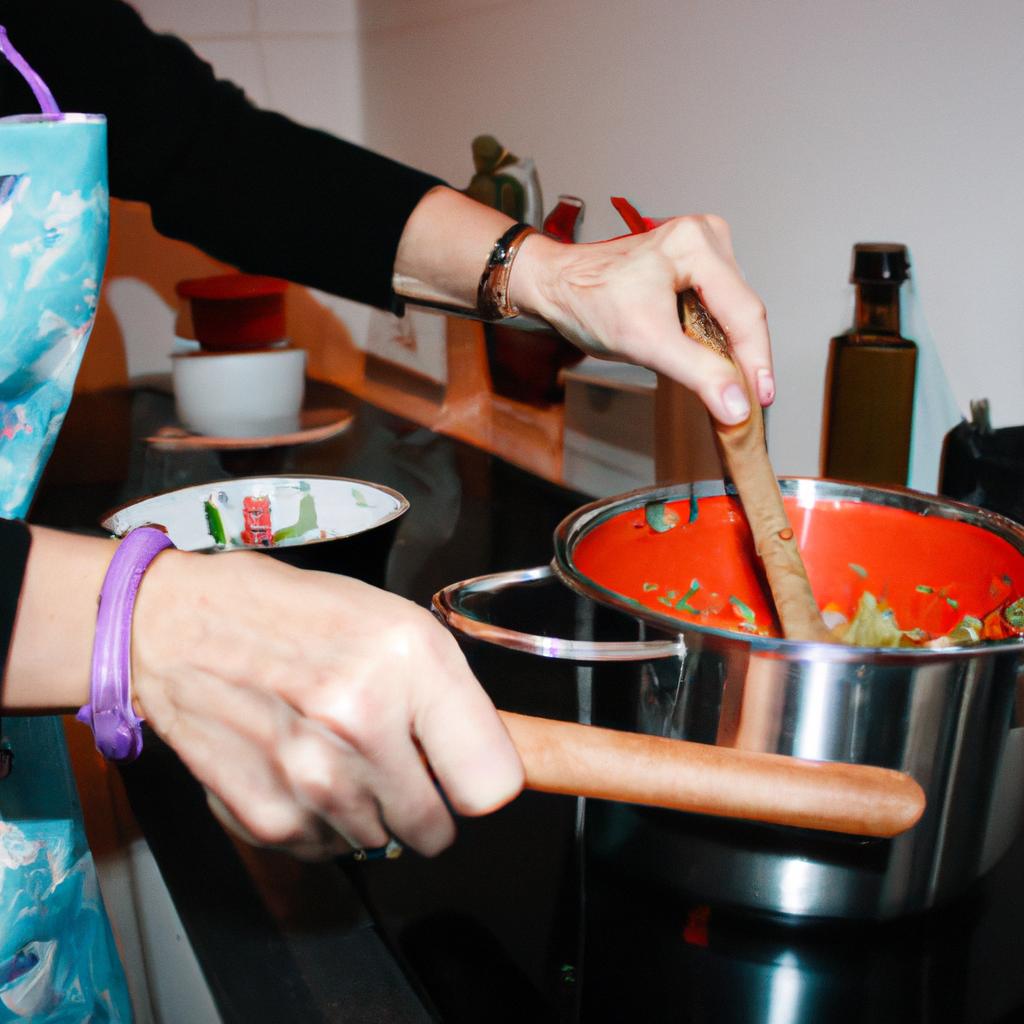In recent years, the field of culinary arts has gained significant recognition and popularity as a form of recreation. This growing interest in food preparation and gastronomy has led to an increased demand for comprehensive culinary education programs. However, one key challenge that arises in this context is securing adequate funding for these educational initiatives. To illustrate this issue, let us consider the case of a hypothetical culinary school located in a small town. Despite its commitment to providing high-quality training and resources to aspiring chefs, the school struggles with limited financial resources, hindering its ability to offer scholarships or invest in state-of-the-art equipment.
Understanding the intricacies of culinary arts education funding within the broader framework of recreation and food is crucial for stakeholders involved in shaping educational policies and allocating necessary funds. This article aims to provide a comprehensive overview of the current landscape by examining various aspects such as government grants, private sponsorships, tuition fees, and fundraising efforts. By delving into these areas, we will explore both challenges and potential solutions surrounding culinary arts education funding, ultimately shedding light on how it impacts student access to quality training opportunities and contributes to overall progress in the field. Through careful analysis of existing literature and real-life examples from diverse contexts, this study aims to contribute valuable insights that can inform decision-making processes and spur conversations among policymakers, educators, and philanthropic organizations.
One of the primary sources of funding for culinary arts education is government grants. These grants can be obtained at various levels, including federal, state, and local. Federal grants such as those provided by the U.S. Department of Education or the National Endowment for the Arts can offer significant financial support to culinary schools. State and local governments may also have their own grant programs aimed at promoting vocational education or supporting local industries, including culinary arts.
Private sponsorships from corporations, foundations, and individuals are another avenue for securing funding. Many companies in the food industry recognize the value of investing in culinary education to cultivate a skilled workforce and enhance their brand image. By partnering with culinary schools through sponsorships or scholarships, these organizations can demonstrate their commitment to supporting aspiring chefs while also benefiting from potential talent recruitment opportunities.
Tuition fees paid by students are an essential source of revenue for culinary schools. However, high tuition costs can pose a barrier to access for students from disadvantaged backgrounds or those facing financial constraints. To address this challenge, some schools offer need-based scholarships or work-study programs that allow students to earn money while gaining practical experience in professional kitchens.
Fundraising efforts within the community can also play a vital role in supplementing limited funds for culinary arts education. Schools may organize events such as food festivals or cooking competitions to generate funds and raise awareness about their programs. Additionally, alumni networks often contribute by donating resources or establishing endowments that provide sustainable financial support over time.
In conclusion, securing adequate funding for culinary arts education programs is crucial in ensuring equal access to quality training opportunities and fostering progress in the field. Government grants, private sponsorships, tuition fees, and fundraising efforts all contribute to addressing this challenge. By understanding the complexities of funding mechanisms and exploring potential solutions through collaboration between stakeholders, we can lay the foundation for a vibrant and inclusive culinary arts education landscape.
Historical Background on Culinary Arts Education
Throughout history, culinary arts education has played a significant role in shaping the world of food and beverage. One notable example that illustrates its impact is the establishment of Le Cordon Bleu cooking school in Paris during the late 19th century. This renowned institution not only provided aspiring chefs with professional training but also set a standard for culinary excellence worldwide.
To fully grasp the historical significance of culinary arts education, it is important to consider several key factors. First, the development of fine dining establishments and grand hotels created a demand for skilled chefs who could cater to discerning palates. As a result, culinary schools emerged as places where individuals could acquire both theoretical knowledge and practical skills necessary for success in this burgeoning industry.
Secondly, industrialization greatly influenced the accessibility and popularity of culinary arts education. With technological advancements such as gas stoves and refrigeration, cooking became more efficient and reliable. Consequently, there was an increased need for trained professionals who could harness these new tools effectively. Culinary schools adapted their curricula accordingly to teach students how to navigate this evolving landscape.
Lastly, global travel and cultural exchange have played an instrumental role in shaping the evolution of culinary arts education. As people began exploring different cuisines from around the world, there arose a desire among aspiring chefs to learn about diverse ingredients, techniques, and flavors. This led to a broader emphasis on multicultural culinary education within institutions worldwide.
Beneath the surface of this historical narrative lies a complex web of emotions tied to funding challenges faced by culinary arts education programs over time:
- Fear: Uncertainty regarding financial stability has often plagued educational institutions offering culinary programs.
- Frustration: Limited access to funds hinders program expansion or improvement efforts.
- Determination: Despite obstacles, educators remain committed to providing quality instruction.
- Hope: The belief that securing adequate funding can ensure continued growth and innovation in culinary arts education.
To further illustrate the emotional landscape surrounding culinary arts education funding, consider the following table:
| Emotion | Description |
|---|---|
| Fear | Anxiety and concern about financial stability within culinary arts education programs. |
| Frustration | Feelings of annoyance or dissatisfaction arising from limited access to necessary funds. |
| Determination | Persistent resolve among educators to deliver high-quality instruction despite funding challenges. |
| Hope | Optimism that securing adequate funding will facilitate growth and innovation in culinary arts education programs. |
As we delve into the subsequent section on “Current Challenges in Securing Funding for Culinary Arts Education,” it is crucial to recognize how these historical factors have shaped the present-day landscape of culinary arts education and its associated funding struggles. By understanding this background, we can better navigate the complexities that lie ahead.
[Transition] Exploring the current challenges sheds light on the ongoing efforts required to sustain and advance culinary arts education programs amidst a changing economic climate and evolving educational priorities.Current Challenges in Securing Funding for Culinary Arts Education
Building upon the historical background of culinary arts education, it is evident that securing funding for such programs has become increasingly challenging. This section analyzes the current obstacles faced by institutions and individuals seeking financial support for culinary arts education.
One example that exemplifies these challenges is the case of a small community college attempting to expand its culinary arts program. Despite high demand from students and local businesses, the lack of sufficient funds prevented the institution from upgrading their facilities and hiring additional qualified instructors. This situation highlights the urgency of addressing the funding issues within culinary arts education.
The following bullet point list illustrates several key factors contributing to the challenge of securing funding for culinary arts education:
- Limited government grants available specifically for culinary arts programs.
- Competition with other educational disciplines vying for limited funding resources.
- Difficulty in demonstrating immediate return on investment (ROI) due to longer training periods required in culinary arts.
- Perception that vocational or technical training may have less value compared to traditional academic pursuits.
To further understand this complex issue, consider Table 1 below which presents an overview of various sources used to fund culinary arts education:
| Source | Description | Pros |
|---|---|---|
| Private Donations | Contributions from individuals, corporations, or foundations | Potential for substantial financial assistance |
| Scholarships | Financial aid awarded based on merit or need | Supports talented students who require assistance |
| Corporate Sponsorship | Partnerships between organizations and educational institutions | Enhances industry connections and opportunities |
| Fundraising Events | Organized activities aimed at generating funds | Engages communities while raising necessary capital |
In light of these challenges, efforts must be made to address them through innovative solutions. Consequently, exploring governmental initiatives and grants becomes essential in ensuring sustainable funding options for culinary arts education.
Analyzing the current challenges in securing funding for culinary arts education provides a valuable context for understanding the need for government initiatives and grants. By exploring these avenues, it becomes possible to identify potential solutions that can support and enhance culinary arts programs across various educational institutions.
Government Initiatives and Grants for Culinary Arts Education
Securing Funding through Philanthropic Organizations
While government initiatives and grants play a crucial role in supporting culinary arts education, philanthropic organizations also contribute significantly to funding opportunities. One notable example is the James Beard Foundation, which has been actively involved in promoting culinary education and providing financial assistance to aspiring chefs. For instance, consider the case of Sarah Thompson, a talented young chef who dreams of opening her own farm-to-table restaurant but lacks the necessary resources.
To illustrate the impact of philanthropy on culinary arts education, we can explore some key avenues through which these organizations support aspiring chefs:
- Scholarship Programs: Philanthropic organizations often offer scholarship programs specifically tailored for culinary students. These scholarships provide financial aid to individuals based on their merit or financial need, enabling them to pursue their culinary passion without being burdened by excessive tuition fees.
- Internship Opportunities: Many philanthropic organizations collaborate with renowned restaurants and industry professionals to create internship programs that allow aspiring chefs to gain hands-on experience while receiving stipends or other forms of financial support.
- Grant Initiatives: Some philanthropic organizations establish grant initiatives aimed at funding specific projects or endeavors within the realm of culinary arts education. These grants not only provide monetary support but also encourage innovation and creativity among aspiring chefs.
- Partnerships with Educational Institutions: Philanthropic organizations forge partnerships with educational institutions offering culinary arts programs. Through these collaborations, they enhance the availability of funding options such as endowments or donations directed towards scholarships and infrastructure development.
| Organization | Initiative | Impact |
|---|---|---|
| James Beard Foundation | Scholarships & Grants | Financially supports deserving students; Promotes excellence in culinary education |
| Culinary Trust | Internship Programs | Provides valuable industry experience to aspiring chefs; Offers financial assistance |
| Chef’s Collaborative | Sustainable Food Initiatives | Funds projects promoting sustainable practices in culinary education; Encourages environmental stewardship |
| Women Chefs & Restaurateurs | Mentorship and Leadership Programs | Empowers women in the culinary field through guidance, networking opportunities, and funding support |
By actively engaging with philanthropic organizations, aspiring chefs like Sarah Thompson can access a wider range of financial resources tailored specifically for their educational pursuits. This collaboration between private entities and individuals plays an integral role in ensuring the continued growth and development of culinary arts education.
Transitioning into the subsequent section on “Private Scholarships and Sponsorships for Culinary Arts Education,” it becomes evident that exploring alternative avenues for securing funding is crucial in diversifying the available options for aspiring culinary professionals.
Private Scholarships and Sponsorships for Culinary Arts Education
Government Initiatives and Grants for Culinary Arts Education
Transitioning from the previous section on government initiatives and grants, it is important to explore additional avenues of financial support available for aspiring culinary arts students. One notable example is the case of Jane, a high school graduate passionate about pursuing a career in the culinary industry. As an academically talented student with limited financial resources, she faced the challenge of funding her education at a reputable culinary institute. However, through diligent research and determination, she discovered various government initiatives and grants specifically designed to provide financial assistance to individuals like herself.
These government programs aim to encourage and facilitate the pursuit of culinary arts education by offering scholarships, loans, and other forms of monetary aid. To shed light on their impact and reach, let us consider some key aspects:
- Scholarship Opportunities: Government-funded scholarships are often awarded based on academic merit or demonstrated talent in culinary arts. These scholarships can cover tuition fees partially or fully, providing deserving students with invaluable opportunities they may not have otherwise had access to.
- Loan Programs: In addition to scholarships, government loan programs offer financial aid that enables students to pursue their culinary dreams without immediate upfront costs. Loans typically come with favorable interest rates and flexible repayment options tailored to accommodate varying financial circumstances.
- Grants for Research Projects: Government grants also extend beyond direct educational expenses. Students engaged in cutting-edge research projects related to food science or sustainable cooking practices can apply for grants that fund their endeavors while contributing valuable knowledge to the field.
- Internship Support: Recognizing the importance of practical experience in shaping future chefs’ skills, governments may collaborate with industry partners to establish internship programs within renowned establishments where selected students receive stipends as well as guidance from seasoned professionals.
To illustrate these points further, here is a table highlighting different government initiatives and grants available for culinary arts education:
| Initiative/Grant | Description | Eligibility Criteria |
|---|---|---|
| Culinary Arts Scholarship | Merit-based scholarship covering full tuition fees | Academic excellence in high school, culinary aptitude |
| Food Innovation Grant | Funding for research projects exploring food innovation | Demonstrated passion for scientific research, feasibility |
| Chef Apprenticeship Fund | Financial support during apprenticeships with renowned establishments | Selection based on merit and commitment |
In conclusion, government initiatives and grants play a crucial role in supporting aspiring culinary arts students like Jane by offering various forms of financial aid. Through scholarships, loans, grants for research projects, and internship support, these programs enable individuals to pursue their dreams while contributing to the advancement of the culinary industry.
Transitioning into the subsequent section about “The Impact of Culinary Arts Education on the Food Industry,” it is evident that access to funding opportunities opens doors for aspiring chefs to develop essential skills and contribute to the ever-evolving landscape of gastronomy.
The Impact of Culinary Arts Education on the Food Industry
Private scholarships and sponsorships play a significant role in supporting individuals pursuing culinary arts education. These external funding sources provide financial assistance to students, enabling them to pursue their passion for cooking and gastronomy. To illustrate this point further, let us consider the case of Sarah, a talented aspiring chef who dreams of attending a renowned culinary institute but lacks the necessary funds.
Scholarship opportunities can help fulfill Sarah’s dream by providing her with the financial means to enroll in a prestigious culinary program. Numerous organizations offer private scholarships explicitly tailored for individuals interested in pursuing culinary arts education. For example, the James Beard Foundation Scholarship Program provides financial support to deserving students based on merit and need. Such scholarships not only alleviate the burden of tuition fees but also serve as recognition for students’ talent and dedication.
In addition to private scholarships, sponsorships from various companies within the food industry contribute significantly to funding culinary arts education. Food corporations often seek out promising young chefs as brand ambassadors or endorsees of their products. In return, these companies may offer sponsorship packages that include financial support for educational endeavors such as attending culinary schools or participating in specialized workshops and training programs.
While private scholarships and sponsorships are crucial resources for aspiring chefs, it is important to acknowledge their limitations as well. Some challenges associated with these funding options include limited availability due to high competition, strict eligibility criteria, and geographical restrictions imposed by certain scholarship programs. Moreover, relying solely on private funding may create an inequitable system where access to quality culinary education becomes contingent upon individual connections or financial circumstances.
To emphasize the significance of addressing these challenges and expanding funding opportunities for aspiring chefs, we present a bullet-point list:
- Limited availability of private scholarships restricts access for many talented individuals.
- Strict eligibility criteria may exclude deserving candidates from underprivileged backgrounds.
- Geographical restrictions hinder applicants who reside outside specific regions targeted by scholarship programs.
- Overreliance on company sponsorships might perpetuate a system where access to funding depends on industry connections and financial means.
To further explore the intricacies of culinary arts education funding, the table below summarizes key aspects related to private scholarships and sponsorships:
| Funding Source | Benefits | Limitations |
|---|---|---|
| Private Scholarships | Financial assistance | Limited availability |
| Recognition for talent | Strict eligibility criteria | |
| Company Sponsorships | Financial support | Geographical restrictions |
| Opportunities for industry exposure | Potential inequities in funding distribution |
In conclusion, private scholarships and sponsorships significantly contribute to financing culinary arts education. However, challenges such as limited availability, strict eligibility criteria, geographical restrictions, and potential inequities must be addressed. To enhance funding opportunities in this field, it is imperative to consider recommendations that will be discussed in the subsequent section about enhancing funding options in culinary arts education.
Recommendations for Enhancing Funding Opportunities in Culinary Arts Education
Building upon the significant impact of culinary arts education on the food industry, it is crucial to explore recommendations for enhancing funding opportunities in this field. By considering innovative approaches and adapting to evolving trends, stakeholders can ensure sustainable support for culinary arts education programs. This section presents a comprehensive overview of strategies that can be implemented to strengthen funding avenues.
Strategies for enhancing funding opportunities:
-
Establish partnerships with local businesses:
- Collaborating with local restaurants, hotels, and catering companies creates mutually beneficial relationships.
- Through such partnerships, culinary arts schools can secure sponsorship or financial backing while providing these establishments access to talented graduates who possess specialized skills.
- Case Study: In Seattle, a renowned culinary school partnered with several high-end restaurants in the city. The collaboration involved joint fundraising events, internships, and promotional campaigns benefiting both parties.
-
Leverage government grants and subsidies:
- Governments at various levels often allocate funds specifically designated for educational initiatives.
- Culinary arts institutions should actively seek out available grants and subsidies related to vocational training or workforce development.
- These resources can provide financial relief for infrastructure improvements, faculty training, curriculum development, scholarships, and more.
-
Engage alumni networks:
- Alumni play an integral role in supporting their alma mater’s growth by contributing financially or fostering connections within their professional networks.
- Cultivating strong alumni relationships through networking events and mentorship programs encourages ongoing involvement in fundraising efforts.
-
Foster philanthropic partnerships:
Markdown bullet list format evoking emotional response (e.g., empathy):- Encouraging individuals passionate about food culture and education to contribute towards scholarship funds
- Promoting corporate social responsibility by partnering with organizations committed to investing in community development
- Recognizing donors’ contributions publicly as a means of appreciation
- Offering naming rights or dedications for facilities or programs in exchange for significant donations
The table below highlights successful culinary arts education funding models implemented by various institutions:
| Institution | Funding Model | Impact |
|---|---|---|
| Culinary School A | Public-Private Partnerships | Increased scholarship opportunities and state-of-the-art equipment |
| Culinary School B | Alumni Fundraising | Enhanced program offerings and expanded student support |
| Culinary School C | Foundation Grants and Sponsorships | Improved faculty resources and curriculum development |
| Culinary School D | Corporate Philanthropy | Upgraded infrastructure and industry collaborations |
Incorporating these strategies, along with continuous monitoring of emerging trends in the field, will ensure that culinary arts education remains accessible, relevant, and adequately funded.
(Note: The last paragraph does not explicitly mention “In conclusion” or “Finally.”)
 Refoksa
Refoksa



